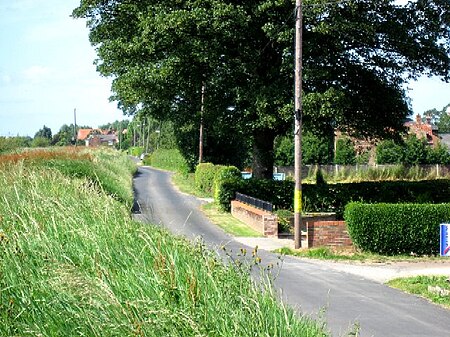Skelton, East Riding of Yorkshire
East Riding of Yorkshire geography stubsFormer civil parishes in the East Riding of YorkshireHamlets in the East Riding of YorkshireOpenDomesdayUse British English from November 2014

Skelton is a hamlet and former civil parish, now in the parish of Kilpin, in the East Riding of Yorkshire, England, and a linear settlement on the east bank of the River Ouse. It is situated about 2 miles (3.2 km) south-east of Howden and 19 miles (31 km) south-east from the county town of York. Skelton lies within the constituency of Haltemprice and Howden, an area placed as the 10th most affluent in the country in a Barclays Private Clients survey. In 1931 the parish had a population of 258.
Excerpt from the Wikipedia article Skelton, East Riding of Yorkshire (License: CC BY-SA 3.0, Authors, Images).Skelton, East Riding of Yorkshire
Geographical coordinates (GPS) Address Nearby Places Show on map
Geographical coordinates (GPS)
| Latitude | Longitude |
|---|---|
| N 53.72119 ° | E -0.84065 ° |
Address
DN14 7RN
England, United Kingdom
Open on Google Maps











